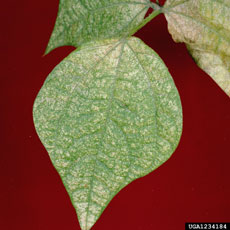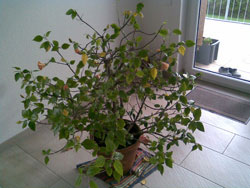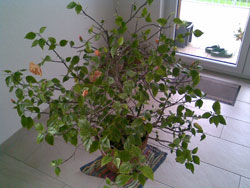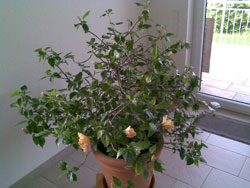Narayana Verlag
- more than 10.000 products about homeopathy and natural healing
- Seminars with worldwide known homeopathic doctors
- Healthy and natural food
- Homeopathy for plants
Top Customer's Feedbacks
from 108604 Feedbacks
Beckie from USA
Your site was recommended at my homeopathy academy. I shall return.
W.L. from USA
you might point out which supplements can't be shipped to the US and Canada with the description.
G.C. from USA
I am very pleased with Narayan Verlag!Narayana Verlag
 2.738.485 customers from 193 countries
2.738.485 customers from 193 countries
- more than 10.000 products about homeopathy and natural healing
- Seminars with worldwide known homeopathic doctors
- Healthy and natural food
- Homeopathy for plants

Beckie from USA
Your site was recommended at my homeopathy academy. I shall return.Experiences with Spider mites

Petroleum 30 C |
|||||||||||||||||||||||||||||||||||||||||||
Treatment date: |
June 6, 2010 |
Pflant: |
Yew, box, juniper |
Location: |
Garden |
Problem: |
Infestation of white mites |
Analysis: |
|
Treatment: |
Watered with a solution of 15 ml in 15 L water |
Result: |
June 12: yew - no further infestation, yellow needles and branches cut back; box and juniper still slightly affected |
 Yew no further infestation |
 |
Box no further infestation |
 |
Juniper no further infestation - new fresh sprout shoots |
Amblyseius 6: white spider mites on apple tree
Treatment date: |
June 12, 2010 |
Plant: |
Apple tree, kitchen window |
Location: |
Lot 76 |
Problem: |
Infestation of white spider mites |
Analysis: |
|
Treatment: |
Watered and sprayed with 10 ml in 10 L water |
Result: |
June 13: spiderweb could not be removed with a strong water jet |
| June 27: infestation halted; no further webs; no further spread to other trees |
 |
 |
| Apple tree with infestation | Apple tree with infestation |
 |
|
| No further infestation | |
![]() » Amblyseius (predatory mites) order
» Amblyseius (predatory mites) order
 Psorinum
Psorinum
Psorinum 200 C Spider mites on blackberries: Blackberry plant is wasting and has pale leaves. After a single treatment (spraying and watering) with Psorinum 200 C, it recovered and is producing new leaves that are not infested.
Blackberries, planted in spring, good growth, but then
growth stopped, and they became infested with spider mites.
Treated on June 25 with
Psorinum 200 C (sprayed and watered)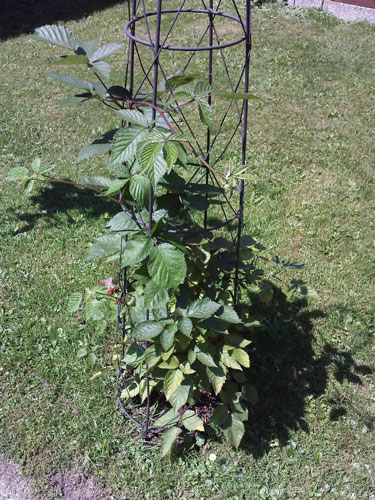
Today (July 7) there are no further signs (except that the leaves remain pale) and the plant is once again continuing to grow.
The silver on the edge of the leaves is just the hairs of the blackberry.
Psorinum: Spider mites on greenhouse cucumbers
Ms S. had sixcucumbers in her greenhouse this year. She planted them, pre-grown in pots, at the end of April . By May she already had her first cucumbers. As every year, they developed well until they were affected by spider mites in June.
The affected leaves had yellow spots, caused by the sucking action of the pests, which later became larger, until finally the entire leaf dried out and turned brown.
In previous years, Ms S. had used beneficial organisms (green lacewings). This somewhat reduced the infestation but without completely eliminating it.
This year Ms S. treated the cucumbers with a mixture of Petroleum 30 C and Psorinum 200 C, which she applied to the plants every 4 to 5 days, watering and spraying a total of 3 applications. read on...
The spider mite infestation improved a little but then returned strongly again. At this stage the cucumber plants looked distinctly unwell.
At the beginning of August, she tried Amblyseius 6 X, which is a homeopathic preparation from Gamasina mites.
She removed the old affected leaves and watered the cucumbers 2x per week with 10 ml of remedy solution in 10 litres of water.
To her astonishment, the cucumbers developed new shoots, with healthy leaves and fruit, right through to the end of September – completely free of spider mites. In previous years the cucumber plants were finshed already in August. (Edda S., Schwaigern 2013)
 Silicea
Silicea
Silicea 6 D + Natrium sulph. 6 D : spider mites on
cucumbersCucumbers were infested with spider mites. The severely infested leaves were removed and the plants were watered every 5-7 days with Natrium sulphuricum 6 D and Silicea 6 D, until there was a noticeable improvement. The roots developed better then ever before and the cucumbers tasted excellent.
Möcheln, 2012



